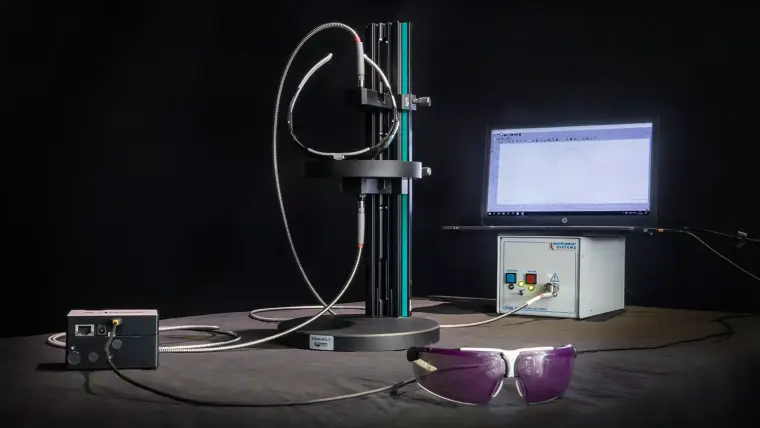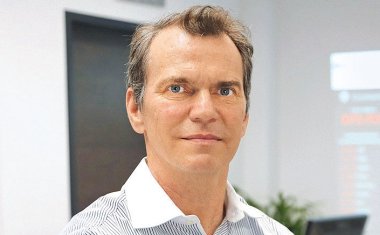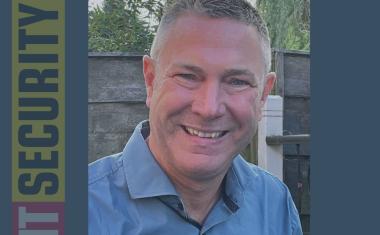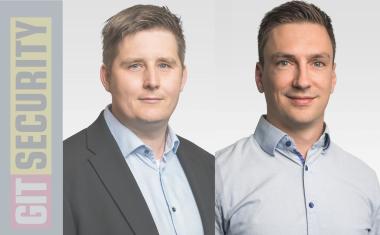The Dangers of Light Sources, Displays and LEDs for Eyes and Skin
In today's world, we are surrounded by light sources, displays and LEDs. From our smartphones and computers to the bright lights in our homes and offices, our eyes are constantly exposed to a variety of light sources. While light is essential for our vision, too much of it can damage our eyes. As Paracelsus said: "The dose makes the poison".
In this article you will learn more about the dangers of light sources, displays and LEDs for the eyes and your skin, and how you can protect your health. You will also find out who can help to make such devices safer.
content:
- How can you protect yourself in everyday life?
- What are the effects of blue and UV light?
- What protective measures are there for professionals?
- Lasers, LEDs & co.: How manufacturers comply with safety standards for light sources
- Small lexicon of technical terms
- Author: Ursin Solèr - MSc ETH in Physics Lecturer Institute of Photonics and Robotics (IPR)

How can you protect yourself in everyday life?
Basically, common sense is a good guideline and you should rely on your own perception. For example, if you notice a light source with an unpleasantly bright, piercing light, you should avoid it. Caution is always advised, especially with lasers. Even if they are classified as safe, you should never deliberately look into the beam (a laser pointer has an irradiance1, i.e. it illuminates a surface as brightly as the sun). However, the situation cannot always be resolved by not purchasing such devices. If the device is already available or indispensable, you can remedy the situation with colored adhesive tape, foil or paper. In the long term, the manufacturer should be contacted, as it is either a defect or also affects other customers. Parents should pay particular attention to this when buying toys.
What are the effects of blue and UV light?
However, there are also hazards that are difficult or impossible for humans to perceive. These include blue light and UV light. Too much UV light leads to sunburn on the skin and snow blindness in the eyes. In the case of blue light, effects such as retinal damage or clouding of the lens are known, but are still the subject of research. There are also reports on the influence on the day/night rhythm, but the scientific results on this are contradictory. If you feel unwell, you can use blue light filters for smartphones, for example - there are software solutions or as a film for the display.
What protective measures are there for professionals?
There are often additional hazards in the occupational environment, on the one hand due to equipment (welding systems, laser measurement, material processing, etc.) and on the other hand due to the work areas, e.g. in the development of such systems. Infrared light sources2 that emit radiation invisible to the human eye are frequently used. This affects an astonishing range of professions from kitchen staff to engineers. Infrared light is often used in sensor technology and data transmission in particular, as it is both cheaply available and invisible and therefore inconspicuous. Used correctly, it is completely safe.
Lasers, LEDs & co.: How manufacturers comply with safety standards for light sources
All manufacturers of devices containing light sources must evaluate the potential hazards for users and service personnel during the development process. When evaluating light sources, the size and shape of the source as well as the time course of the light emission must be taken into account. An open fire is a very large, extended light source, whereas a laser diode3 usually has a very small emitting zone and therefore a high beam density4 . The time curve takes into account whether the source is continuously on or flashing. Depending on the assessment, it may be necessary to work with protective equipment such as goggles or to switch off the source automatically. Fortunately, the safety of laser sources is easier to assess because they usually emit light of only one wavelength5. In contrast, the safety assessment of alternative light sources such as LEDs or obsolete light bulbs, fluorescent tubes or halogen lamps, which are still occasionally used today, requires complex laboratory equipment. The most important standards are now clearly defined and change relatively rarely, as was recently the case with the abolition of laser class 2. It is important for experts to keep up to date with the latest technology and standards and to keep up to date with new developments, and a competent partner such as FHGR will be happy to help you with this.
Small lexicon of technical terms
1The irradiance corresponds approximately to the brightness perceived by humans (energy per time).
2Infrared light sources emit light that is invisible to the human eye. It is also known as thermal radiation and forms the basis of applications such as thermal imaging cameras, remote controls, light barriers and night vision devices.
3Laser diode or semiconductor laser is a light source related to the light-emitting diode (LED) that generates laser radiation. Laser radiation is characterized by high irradiance and strong focusing, i.e. all emitted light fits through a small opening such as the human pupil.
4The beam density describes how bundled the radiation is emitted and imaged onto the retina.
5The wavelength describes the color of the light.

Author: Ursin Solèr - MSc ETH in Physics Lecturer Institute of Photonics and Robotics (IPR)
Ursin Solèr worked for 5 years in industry and research with responsibility for various laboratories at PMOD/WRC and Zeochem AG and as a research assistant in two groups at ETH and PSI. He has been working in education since 2017, first as a vocational school teacher in Zurich and at the same time as an apprentice trainer at ETH, then as a research assistant and since 2022 as a lecturer in photonics. In this role, he is responsible for the eye safety service, teaches in the Photonics, Mobile Robotics and Digital Supply Chain courses and researches the implementation of eye safety standards and the implementation and integration of robotic and optical systems.












